Unhealthy animals make for unhealthy food. Poor health is usually caused by missing nutrients, toxins, and infections. Naturally, food from an unhealthy animal has a higher chance of being malnourishing, toxic, or infectious.
Our industrial food production system relies on genetically disturbed animals raised in crowded conditions and fed unnatural diets.
Fortunately the movement to healthier food production has been gathering steam recently. In most cities, it’s possible to meet local farmers at farmers markets and obtain naturally raised meat and vegetables.
We’ve been meaning to learn more about local farms and their food production methods. On Saturday, we joined the Livin’ Paleo in Boston group on a visit to Green Meadows Farm in Hamilton, Massachusetts. Green Meadows Farm was founded by General George S. Patton and is still owned by one of his heirs. It is managed by Andrew and Diana Rodgers. We were delighted to meet Diana at the Ancestral Health Symposium, and have looked forward to visiting her farm. I thought I’d share some photos and information from our visit.
Chickens
The Rodgers keep a pen of Cornish Rock chickens as an educational exhibit. Cornish Rocks supply the great majority of the chicken consumed in the United States; yet they are a genetically disturbed breed that develops arthritis by age 10 weeks and commonly dies young or fails to reproduce.
They are characterized by extraordinarily rapid growth and large breasts – so large that they have difficulty maintaining their balance and walk awkwardly. The breed doesn’t like to walk and if given food and water and if their poop is removed, they will happily live their whole lives in one spot.
The Rodgers force their Cornish Rock hens to walk by placing their feed a short distance from their coop:
Virtually all supermarket chicken meat is obtained from this breed, and even though their unaided growth is extremely rapid, producing a full-size chicken in 6 to 8 weeks, I have read that growth hormones are sometimes injected to accelerate growth further.
The Rodgers keep other, healthier breeds of chicken:
These are working animals. The farm is actually an organic vegetable farm, and the animals are used to clear and fertilize vegetable plots. They do sell their chickens in the fall, but apparently the healthier breeds of chicken produce a stringier meat that most Americans don’t care for.
Pigs
Currently only 20 acres of the 230 acre farm are in cultivation. The rest has been occupied by forest, or is too wet to farm. The Rodgers are steadily trying to clear woodland to create new vegetable plots, but it is a slow process.
They begin by confining pigs to a wooded area using electrical fences. The pigs root around, clearing underbrush and weakening the root systems of the trees. After a season of pig exposure, the trees can be cut down more easily.
Here you can see some pigs:
The orange electrical fence is on the left.
Sheep
After the trees have been cut down, it still takes at least a year – generally more – to naturally break down roots and prepare the field for plowing. Sheep and chickens are the animals that effectively turn a former woodland into a fertile, root-free vegetable field.
Here are some sheep in a plot that is currently occupied by clover, a legume that restores nitrogen to the soil:
Here is a sheepdog in training:
If you ever find yourself on Asbury Street in South Hamilton, Mass., here’s the farmstand to look for:
Livin’ Paleo in Boston Group
Here is a photo of our tour group:
Diana Rodgers is on the far right, Andrew Rodgers (fifth from the left) is visible only as a head. I’m in the red shirt and green shorts sixth from the right; Shou-Ching was the photographer. I won’t try to name everyone but the organizers of the tour, Shilpi and Amit Mehta, deserve special thanks; they are in the back row slightly left of center.
Joel Salatin, Michael Pollan, and Farmageddon
Joel Salatin is a hugely entertaining family farmer in Virginia who has deservedly become famous. Here’s a short video introducing him – this is from the documentary “Fresh”:
For a description of how Salatin’s Polyface farm operates, there may be no better source than Michael Pollan:
Unfortunately, the regulatory and legal climate is actively hostile to local farms. Here is the trailer to the documentary “Farmaggedon”:
Farmageddon – Movie Trailer from Kristin Canty on Vimeo.
A Canadian dairy farmer is currently on a hunger strike protesting laws restricting the sale of milk, and in a similar Wisconsin case Judge Patrick J. Fiedler recently ruled that “Plaintiffs do not have a fundamental right to produce and consume the foods of their choice.” So these are active issues.
Shou-Ching and I strongly support the liberation of food production and consumption from repressive regulations, and recommend checking out your local farms. In our experience, the food is better than that at Whole Foods, and often cheaper. I know we have a number of farmers among our readers; please, let us know if there is anything we can do to promote your businesses.







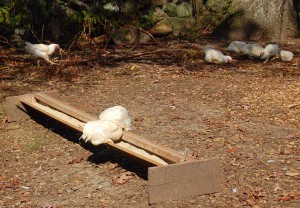
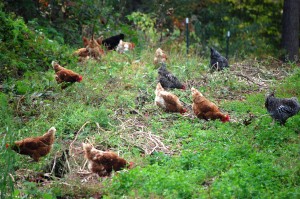
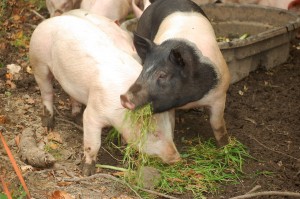
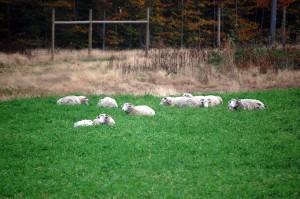

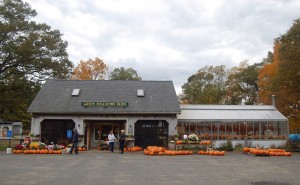





Many of us don’t have time to drive 10s of miles to pick up produce and most coops limit selection in unsatisfactory ways (don’t eat pork, nightshades, etc). Worse off, they have very restricted pick-up schedules. Farmer’s markets are ok but attendance varies and it only runs ~6mo of the year. Do options exist to get this quality of meat and produce? As an example, I live in Waltham. It’d be great if there were some place that I could go buy this stuff, even if it costs more.
Thank you for posting the video of Joel Salatin. I found this video of him explaining why his bacon costs $9 a lb, and nearly gave a standing ovation to my computer. The man’s a national treasure.
http://www.youtube.com/watch?v=mUe8SNvple4&feature=related
I have had great luck with a breed of chicken called Freedom Ranger (modeled after the French Label Rouge standard). These birds don’t mature quite as fast as the Cornish Cross birds – usually about 12 weeks; however they are smart and will forage well for food. Also the meat is incredibly tender (not like a 20 week old heritage breed).
I think I read somewhere that you are going to (or speaking at) the WAPF conference next month. If so I will so hi.
…Tim
Hi balor,
I would try getting in touch with farmers and asking them. Some may even be willing to deliver to your door.
Hi Asher,
Thanks, that’s a great video!
Hi Tim,
I will be at Wise Traditions, please do say hi!
I read on another forum a really useful comment about how we’ve ruined farming. It went something like, “we know we’ve screwed things up when we feed animals who are used to eating rubbish (pigs) good food and animals which like nothing better than just grass (cows) rubbish”. How true.
This is a great post, Paul. My local farmer prices his foods reasonably and delivers to several points in the metro area. Sure, my budget has taken a hit from the food we eat, but I’m more than willing to sacrifice when I can in other areas in order to support my local farmers who are doing things right.
This is a really timely post for me Paul. Thanks.
Here is a link for finding local people in one’s geographical area (also, local stores are usu able to provide one with more information about farmers in the area etc):
http://www.eatwellguide.org/i.php?pd=Home
This is a great post. We are small farmers, raising sheep for market, and pigs, veg and potatoes for home consumption. We are thinking, with longing, about chickens and bees in future.
Ref the pigs v. cows quote above, while pigs shouldn’t exactly eat rubbish, they are certainly omnivorous and happy to eat everything up after the people have finished (It should be heat treated first, though, to minimise pathogenic transmission). Our view is that our pigs recycle our peelings, fish offal, meat scraps, spare turnip crops, and table scraps, plus whatever they can root for into meat – “reduce, reuse, recycle” in a nutshell. We believe every large hotel, hospital and restaurant should be made to keep a few pigs, just to recycle all that waste food they can’t help producing.
Unfortunately, after a hoof and mouth scare a few years ago, the UK introduced a law, which was then taken up throughout the EU, which made it illegal to feed human catering waste to animals. (Which is why our pigs are only for our own use). Go figure!
For small farmers, the ideal is to cut out the middleman and sell direct to the consumer – especially to consumers who care about quality. Obviously not everyone can make regular trips to a farm. The “meatshare” and “vegshare” buying models are probably the most cost-effective way to bring farmers and consumers together.
Just one more point – I have often wondered whether we (as a farm family) should be focussing our “supplementation” efforts on our soil instead of making up soil deficits with tablets.
If you’re of a certain age, Scotlyn you might remember school meals fondly (which were actually lots of real food, before the blues privatised it) … anyway, the slops bucket was pretty revolting, but reputed to “go to the pigs”. Yorkshire is pig country 🙂
“Reduce … Reuse … Recycle” is a good saying. Live within your means and what is wasted from one venture becomes the substance of the next. Like it!
As I recall, there are no hormones approved for use on poultry in the USA – or are you talking about illicit use, or in another country?
Hi Alex,
Can’t recall the exact site I read that but it was a non-US writer. Here’s some info re the US:
From http://envirocancer.cornell.edu/Factsheet/Diet/fs37.hormones.cfm. So yes, no hormones in chickens. Thanks!
I am very grateful to be living in San Antonio, Texas where we have many year-round farmers markets and other sources of local veggies and meat – and access to raw milk, too. It’s a foodie paradise.
Thanks for bumping this to the forefront again. Unfortunately, like Mr. Salatin, everything I want to do in my yard is also illegal. While there are huge problems with our current industrial food distribution and production model, the alternative “farmers’ market” model also isn’t helpful for many. I, for example, live in a local-food desert. Traveling great distances for over-priced food is unfortunately not a very workable alternative for many here.
I live in the central valley of California near Sacramento. Many of the farms out here are huge corporate farms that basically grow one type of crop. The amount of tomatoes grown here supplies most of the country.
Ironically, given the amount of crops grown here, prices in the grocery stores are not cheap and aren’t as fresh. I buy most of my produce from farmer markets and local vegetable/fruit stands. Cutting out the middleman such as the grocery store makes a huge difference in price and the taste.
For example, I am very fortunate to be able to buy fresh pasture range eggs from a local farmer. The taste of the eggs are incredible and the yolks are much oranger than conventional eggs. Most store eggs are 4-6 weeks old and the prices are much higher for premium eggs.
I am a firm believer that buying food from your local farmer is important and to eat what is seasonally available. I agree with Michael Pollan that too many people have lost their connection to where there food comes from and how it is processed. Real food is so important to our health.
Erik
FYI, chickens are hormone free in the US. Producers can inject antibiotics into the egg before hatching and still call it antibiotic-free though.
Awesome post! We are fortunate enough to get our healthy food from Joel Salatin’s farm, as well as a few other local farms. I have become so spoiled that I can’t eat eggs from the grocery store anymore. Those so called organic eggs have no taste! And his bacon is to die for, although I don’t think bacon is PHD approved…
Paul wrote: “They do sell their chickens in the fall, but apparently the healthier breeds of chicken produce a stringier meat that most Americans don’t care for.” It’s been nearly half a century, so maybe I’ve forgotten. But I remember our home-raised White Rocks to be tender and tasty. Wish I could find some today!
Hi Paul,
Just an observation on the group photo … you are wearing shorts and a short sleeve shirt, while the others are in pants and jackets … makes me curious if your body temp runs a little hotter …
Thanks,
Mark
Hi Mark,
My body temperature is normal … I may have better cold tolerance than most … but I think some cold exposure is healthy, and I like to be able to move freely, so I stick with shorts as long as I can.
Balor123,
Check out Caledonia Farm. They sell their products at the Waltham Farmers Market during the summer and fall and have a “buyers club” that starts up in December. As they note on the website, “There is no initiation fee or delivery charge and you order from available inventory.”
http://www.caledoniafarm.com/purchasing.html
Thanks for the suggestion. I have bought from them before but they don’t come to every Farmer’s Market. Worse yet, the market ends in November and there’s no details about purchasing during the winter.
Erik, I hear ya! I live in one of the most agriculturally rich counties in California. A visit to the local docks shows tons of cars coming in from Asia and bin after bin of local lemons going out. Meanwhile, I can’t get a steak, and they keep throwing my goat farmer in jail.
We’re in Chicagoland and have some good options.
We’ve purchased from Solar Harvest Farms in WI. It’s a couple bulk pick-ups during the year. We’ve purchased whole chickens (plus feet & organs), a quarter cow, & a whole hog. We picked up a couple freezers, cheaply, on Craigslist, to make it work.
This is nose to tail purchasing and eating. I’ve learned a lot about the politics of family farming from their newsletter.
http://www.solarharvestfarm.com/
We’ve also purchased from Wallace Farms, at a pick up point in the suburbs. It’s nice to have the ability to choose the cuts, and to buy bimonthly.
http://www.wallacefarms.com/
LocalHarvest.org is a good resource.
We had backyard chickens one year and the eggs were amazing. We purchase pastured eggs at the farmer’s market now, but November thru March we’re stuck with the grocery store eggs.
Hi Paul,
The Green Meadows Farm looks like a wonderful farm animal’s playground (so much wholesome acreage)! You open by saying that “food from an unhealthy animal has a higher chance of being malnourishing, toxic, or infectious.” So I’m wondering if perhaps you’ve changed your stance on fat from conventionally-raised animals (in the comments thread of one of the recipes [french fries, I think], you say that the toxins don’t reach us after the animal’s body has processed it)?
I ask because 1) while I would like to purchase only humanely-raised meat, I don’t really have the means; and 2) in my ongoing back-and-forth with my sat. fat-fearing parents, I concede that yes, animal fat IS unhealthful, but ONLY because they (and I) purchase conventional meat. Do you still stand by the assertion that conventional animal fat is OK? I really don’t want to concede more than I have to, and am still trying everything possible to convince my father that nothing is worse than ungodly amounts of wheat….
Thanks!
Also, I think Scotlyn’s idea of pigs for hotels is wonderful, provided they have a humanely-sized enclosure. A few years back in Taiwan, I noticed that someone in the neighborhood had a beagle-sized pig, and was told that they are common pets these days! In my parents’ days, people raised pigs for food and just fed them scraps – natural if not always fresh; I imagine that small pet pigs are very economical (dog food being so expensive and probably not too nutritious, either). Pigs are also surprisingly fast, so I imagine walking a pig could still be as good exercise as a dog!
I went to a week long event at the Garrison Institute near West Point and was told all their garbage went to a local farmer for his pigs.
Thanks for the post Paul. Green Meadows Farm is run by my sister Diana and her husband, Andrew. For years they have worked on making Green Meadows a community asset. I have been so impressed with their commitment not only to providing fresh local grown products to their loyal customers but also to the model of sustainable agriculture that they represent. They have helped provide a template for individuals looking to make a lifelong career out of organic agriculture, one that provides both an ecologically and financially positive imprint. And, they have worked their butts off to make this farm amazing!
Hi SC,
I am a bit ambivalent on the subject. The animals’ bodies are doing their best to eliminate toxins and generate the proper body composition. You can see how this works in humans: feed a human an unhealthy, obesogenic, malnourishing diet, and they become obese, unhealthy, and die at age 70 instead of 90 or more. But if you assayed the composition of their body, it wouldn’t look much different from the body of person eating a healthful diet. So I would expect animals fed an unhealthy diet to be a little less nourishing and more toxic than animals fed a healthy diet … but not dramatically so.
However, there are a few points that give me pause:
1. Grass-fed, naturally raised animals from local farms taste a lot different (and better) than supermarket food. Our sense of taste is very sensitive, but still, this tells me the food is different.
2. How is the meat treated after the animal dies? How long does it take from slaughter until purchase? Local, naturally raised meat may be handled much more carefully than supermarket meats, reach your home quicker, and with less temperature cycling and freezing. How many nutrients decay, or infections develop, in meat as it goes through commercial handling?
3. Certain tissues may be especially sensitive to toxins. The liver is a detoxification organ and can concentrate toxins. Fat-soluble toxins may concentrate in fat, and metals in mineralized tissue like bone. I much prefer grass-fed beef liver to conventional. On the other hand, other tissues are relatively insensitive to dietary toxins. Muscle meats, like most steaks, should be fine as conventional meats, if properly handled.
I can imagine being swayed either way by new evidence. At the moment, we get organ meats (esp liver), tallow/lard, marrow and bones from grass-fed animals from local farmers, but will buy steak from any source.
Hi Fran,
I was very impressed by Diana and Andrew. I hope they are able to continue expanding the farm, producing great food, and educating the community for a long time to come!
Hopefully I’ll meet you on Dec 4, I’ll be at Green Meadows Farm again to give a talk and book signing.
Best, Paul
Joel Salatin is so inspiring that, had I been younger when I first encountered his videos, I would have seriously considered farming as a “career”.
Hi Paul,
Thank you for the well-reasoned response. Speaking of assaying the composition of unhealthy human beings, a few days ago my father got some recent bloodwork results back, and…his trigs are 300mg/dL to 143mg/dL, and I (and even he!) attribute it to my convincing him – per PHD guidelines – to replace some wheat bread with sweet potatoes!
We still have a long way to go, as wheat bread + jam is still his snack of choice when he’s “hungry” (sometimes just bored); I’m still trying to get him to realize that eating toxins being malnourished only contributes to more hunger. And HDL is still low, at 35mg/dL. But we are moving forward incrementally; while(health<Perfect) health++ //Let's hope it's open-mindedness++ as well 🙂
Thanks so much for all the good work you share!
Hi SC,
Great story! Maybe you can convert him to rice crackers and cheese.
Health++ is good!
Re people living in urban areas and “local food deserts” – I would encourage you to try growing something! There is lots of information online about container growing – and even if you can only harvest one small crop once a year – the taste and buzz of having done so will reward you.
By the way, strawberries really repay container growing – the plants are very hard to kill, and the berries are usually hardy so long as care is taken to make sure they do not come into contact with soil. As a crop that is commonly “pesticided” to death commercially, growing your own for a seasonal treat is a wonderful introduction to growing your own. I would also recommend lettuces, tomatoes, bell peppers, cucumbers, potherbs, and even a few onions and carrots. Just remember not to plant too many seeds at a time!